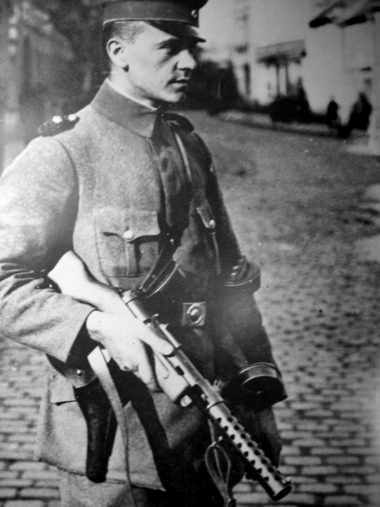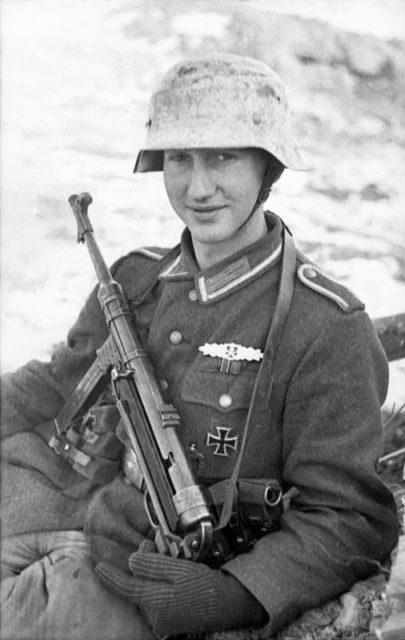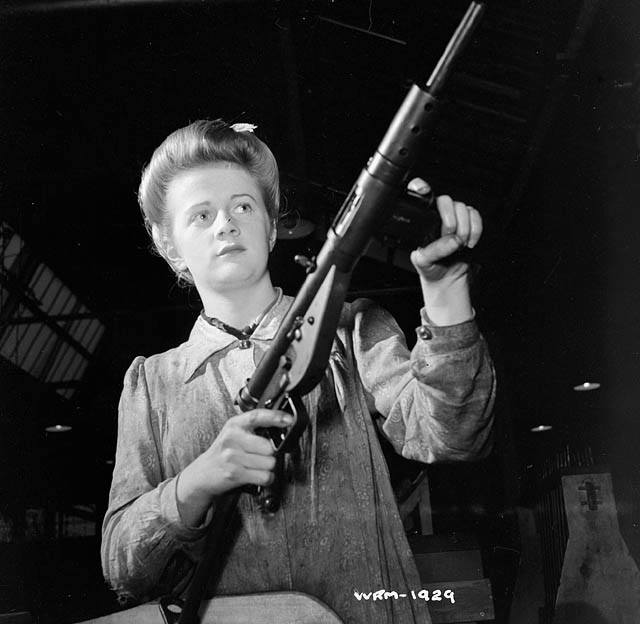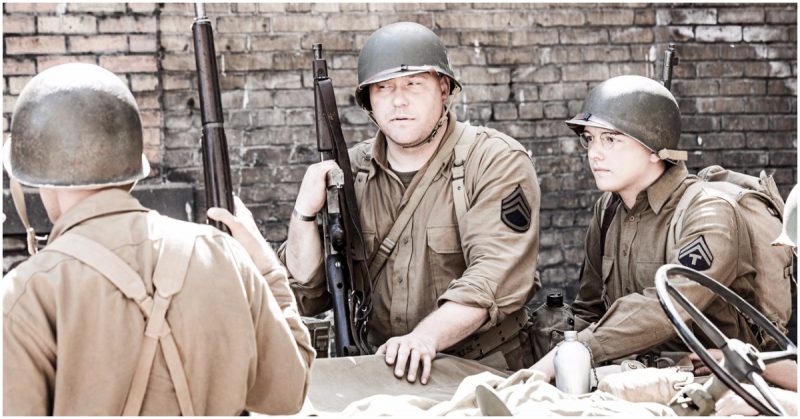Born from Trenches
WWI created a new sort of fighting. Weapons that could deliver high volumes of fire were essential to defending trenches. If they could be made more portable, they would also be invaluable in attacking them.
The result was the sub-machinegun, an attempt to combine the automatic fire of unwieldy machine-guns with the convenient portability of automatic pistols. With the war consuming lives and resources on a massive scale, the race to get such a weapon into action was on.
Pistol-Power Rounds
Early sub-machineguns carried light rounds designed for pistols. If they had used the type of ammunition fired by rifles or machine-guns, the recoil would have been too much to manage.
No Need for Range or Accuracy
Firing pistol rounds from an automatic weapon resulted in them being inaccurate and having little range. It did not matter for their initial purpose of being carried into enemy trenches and used to unleash a mass of fire at close range. It was a shock weapon to be used in assaults. The number of bullets fired was far more important than their accuracy.
First Used in the Air
The first weapon to come close was the Villar Perosa. A double-barrelled Italian weapon, it was first used in 1915. It had been designed for use on aircraft, which were being equipped with weapons for the first time. The Italian military realized it could also be useful for fighting on the ground. They fitted it to bipods, tripods, trucks, and bicycles to provide mobile firepower.
Early Drawbacks
The Villar Perosa was a big leap forward, but it had its faults. Most importantly, it fired 9 mm Glisenti rounds. Unlike the 9 mm Parabellum round, the cartridge lacked power and was a poor choice for a weapon meant to shock and devastate.
The extremely high rate of fire of the Villar Perosa was also problematic. Each of its two barrels shot at a rate of 1,200 rounds per minute. Using 25-round magazines, it required a lot of reloading with not a lot of control of ammunition.
The First True Sub-Machinegun
The Germans produced what is widely seen as the first real sub-machinegun – the Maschinenpistole 18 (MP18). Created by Theodor Bergmann and his design team, work on the MP18 began in 1915, but it did not enter full production until 1918.
Firing 9 mm Parabellum rounds at a rate of 450 rounds per minute, the MP18 provided the short-range firepower that was required. It carried a 32-round magazine and weighed less than 12 lbs when fully loaded.

Grand Plans
The Germans planned to equip 10% of their troops with sub-machineguns, but they could not produce enough. Instead, the guns were used by crack stormtrooper units. Combined with light machine-guns and grenades, they turned soldiers into a deadly fighting force.
Shaping the War
The stormtroopers and their MP18s shaped the end of WWI. They punched through the Allied lines in the spring offensives of 1918, creating a war of movement for the final months of the conflict.
Salvaging the Villar Perosa
At Italy’s Beretta factory, Tulio Marengoni found a way to improve the Villar Perosa’s potential. By separating the two barrels, he transformed it into a weapon for an individual soldier. Although not perfected in time for WWI, the Model 38 was one of the best sub-machineguns of WWII.
Refining the MP18
Following WWI, the Germans were permitted only a few sub-machineguns for their police forces. They remained interested in improving the MP18 and designers refined it through a series of different weapons, including adding single-shot options. During WWII, German troops were carrying the MP38, which together with the MP40 proved to be reliable weapons for that war.

The Thompson Trench Broom
Invented by General John Thompson in 1918, the Thompson gun, also known as the “trench broom” or the “Tommy gun” was designed specifically for trench warfare. By the time it was ready for action, the war was over, but the Tommy gun became iconic. With its drum magazine full of 0.45-inch pistol ammunition, it became a symbol of bootlegging gangsters.
The M1
A redesign of the Thompson gun, the M1, or M1A1, was used by the US military during WWII. Its box magazine and simpler blowback mechanism made it a more practical weapon in the field.
Sten – the Choice of the Resistance
One of the most widely used sub-machineguns of WWII was the British Sten. Designed in 1940 by H. J. Turpin and Major R. V. Shepherd, it was a cheap, practical weapon. The Sten fired 9 mm ammunition from a 32-round box magazine.
Being cheap and easy to make, the Sten was provided in large numbers to British troops. It was also sent abroad to resistance forces to help them in their fight against the Nazis.

Making Guns Under Siege
During WWII, the Russian city of Leningrad was besieged by the Germans for over two years. During that time, the Soviets inside the city designed and produced the PPS-42 sub-machinegun. A variation on an existing model, the PPS-42 was light, simple, and had a good rate of fire.
Eclipsed by the Assault Rifle
The end of WWII saw the sub-machinegun eclipsed by the assault rifle as a front-line weapon. Sub-machineguns remained in use, but the logistics of deploying assault rifles were easier – an important factor in war.
Source:
Christopher Chant (1986), The New Encyclopedia of Handguns
Martin Marix Evans (2002), Over the Top: Great Battles of the First World War
William Weir (2006), 50 Weapons that Changed Warfare
